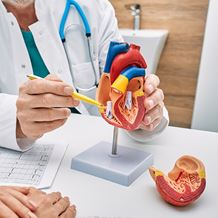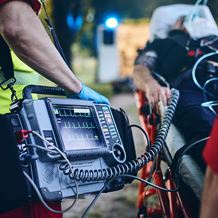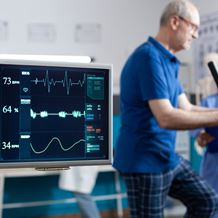Cardioversion (DCCV) Recovery
Cardioversion, or direct current cardioversion (DCCV), is typically performed using a general anaesthetic to treat an irregular heartbeat, or a condition where the heart is beating too fast or too slow. An electrical shock is sent to the heart using electrodes that are attached to your chest. By interrupting the disorganised electrical circuit that is causing the irregular heart activity, a normal heartbeat is restored. Cardioversion is considered a short and safe procedure which may only take up to 30 minutes. The recovery will look different for all patients, and much of it will depend upon your general health and wellbeing coming into the procedure. Our specialist team are here to support you at every step. Please ask about our dedicated cardio rehabilitation program that you can access through your hospital.
Home preparation for cardioversion
There are some useful ways to prepare for your return home after cardioversion.
- Organise someone to help you home from hospital as you won’t be allowed to drive for 24 hours
- Arrange to have some help with daily tasks while you recover
- Set up a comfortable area at home where you can rest as you may feel tired from the anaesthetic
- Place necessary items close by such as your phone, remote control, glasses etc
- Have an accessible place to keep your blood-thinning medication, and any creams or ointments where the electrodes have aggravated your skin
Your recovery from cardioversion
After the cardioversion is complete, you will spend some time under observation while you recover. Some patients may need to stay in hospital overnight, but most are able to return home the same day. Driving is not permitted for 24 hours after cardioversion, so it’s important to arrange for someone to help get you home from hospital. You are likely to feel sleepy for several hours after the procedure, and may have some soreness on your chest from the electrode pads. Your doctor may recommend some creams to help with this. Blood-thinning medication may also be recommended to help reduce the risk of stroke after cardioversion. Upon discharge, your doctor will talk to you about any ongoing treatment and make a follow-up appointment.
What to look out for at home
Cardioversion is generally considered a low-risk medical procedure. It is normal to experience tiredness and a dry throat after the general anaesthetic, and patients may not be able to remember much of the procedure afterwards. Some patients also experience a mild soreness or irritation from the sticky electrodes. After DCCV, there is a small risk of blood clots moving around, and your doctor may prescribe blood-thinning medication to reduce the potential risk of stroke. Talk to your doctor if you experience any ongoing discomfort or heart-related symptoms.
Average recovery timeline
In recovery
- Your heart, blood pressure and breathing will be monitored
- You may feel sleepy for several hours after the procedure
- You may feel groggy for the remainder of the day and not remember the procedure
- Your doctor will talk to you about the results and what treatment may be required going forwards
- You will be prescribed blood-thinning medication to take at home
- You will be given any necessary instructions about what to do at home
- Patients typically return home the same day
At home
- As driving is not allowed for 24 hours, you will need help getting home from hospital
- Arrange for a friend to stay with you at home while you recover
- Don’t return to work until you feel fully recovered
- Use any prescribed creams or ointments to soothe skin irritation from the electrodes
- Take the blood-thinning medication as prescribed by your doctor, typically for at least four weeks after the procedure
- You should feel able to return to your usual daily routine within a few days
Cardioversion Recovery FAQs
What's next?
If you have been experiencing heart-related symptoms, book an appointment with our cardiac services specialist today.
Our specialists in Cardiac Services
View all specialists
Related content

Cardiac Services
Cardiology services at St Vincent’s Private Hospitals, advanced cardiac care.
Read More
Heart Failure
A condition that develops when your heart is unable to pump enough blood around your body.
Read More
Recovery
Cardiac recovery and rehabilitation programs are designed to help you after surgery.
Read More


